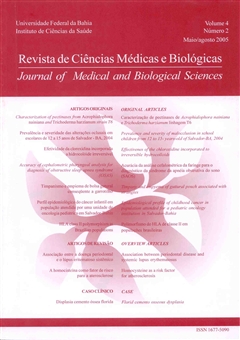HLA class II polymorphism in Brazilian populations
DOI:
https://doi.org/10.9771/cmbio.v4i2.4186Keywords:
HLA - Brazilian population, major histocompatibility complexAbstract
The investigation of the distribution and frequency of HLA (Human Leukocyte Antigen) genes in presumably healthy populations is important to evaluate the participation of these genes in the susceptibility and protection against diseases, to evaluate the genetic origins of populations and to aid in the practice of transplantations. The advances in molecular biology has allowed a better understanding of this system. In addition, information about the HLA class II molecules, such as their mechanism of action, function, and genetic polymorphism, granted their use as markers for ethnic composition of a population and even of individual distinction. The HLA class II genes appear to be associated with some racial/ethnic groups more than others. By using these genetic characteristics, it may be possible to demonstrate, for example, the degree of admixture of Caucasians, Africans and Amerindians that marks in a significant way the origin of the Brazilian population. It also clarifies some aspects of the ancestry of this population and helps the performance of population studies with the objectives to obtain information related to the history and formation features, migration and composition of theses groups, in conformity with local particularities. The relevance of this theme is the frequency of HLA class II antigens, alleles and haplotypes in the Brazilian populations.Downloads
Download data is not yet available.
Downloads
Published
2005-07-03
How to Cite
Alves, C., Souza, T., Veiga, S., Toralles, M. B. P., & Lemaire, D. C. (2005). HLA class II polymorphism in Brazilian populations. Journal of Medical and Biological Sciences, 4(2), 140–149. https://doi.org/10.9771/cmbio.v4i2.4186
Issue
Section
ORIGINAL ARTICLES
License
The Journal of Medical and Biological Sciences reserves all copyrights of published works, including translations, allowing, however, their subsequent reproduction as transcription, with proper citation of source, through the Creative Commons license. The periodical has free and free access.


